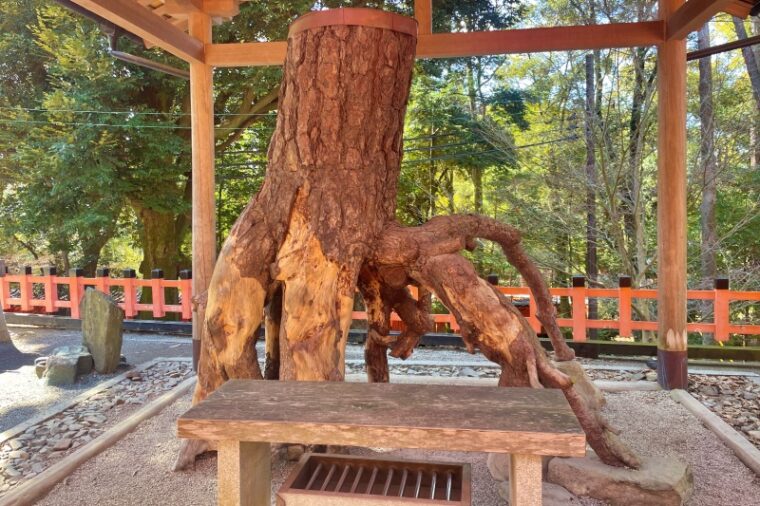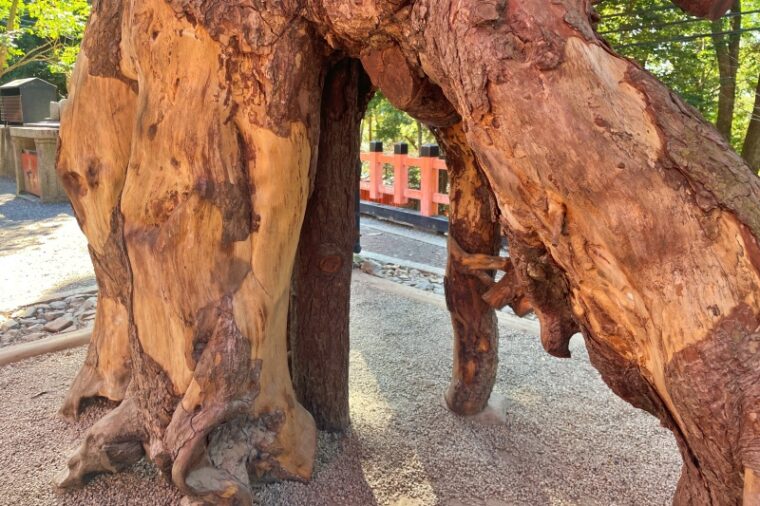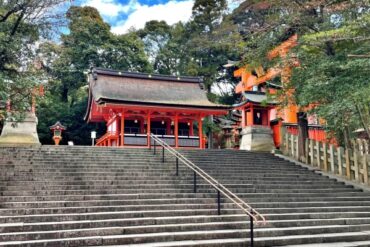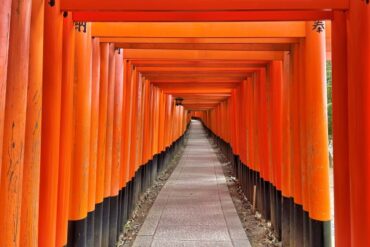Language:Japanese
There are many places at Inari Taisha Shrine in Kyoto that are said to be power spots, but the one we will introduce on this page is the pine tree.
It is a place where a pine tree called “Kimyo Daimyojin” is enshrined, and it is called “Neagari no Matsu” (Root-rising Pine) because its roots are raised above the ground. It is also called ” Hizamatsu -san” (Kneeling Pine) because the raised roots of the pine tree look like people kneeling down to pray.

The history of “Neagari no Matsu (Hizamatsu-san)”
It is believed that “pine trees with exposed roots” are formed when a variety of conditions come together, including weathering of the ground and the age of the pine tree. It is extremely rare for a pine tree to continue to survive with its roots exposed above the ground, and it is a work of art created by nature.
Unfortunately, the ” Neagari no Matsu” at Fushimi Inari Taisha Shrine has now withered, but it used to be located near the approach to the shrine and was enshrined as a sacred tree.
Eventually, it withered and became dangerous, so it was restored by the Yoshida Biological Research Institute in Kyoto and enshrined at its current location.
The “Neagari no Matsu” has long been a sacred tree that has attracted the faith of many people, and although it has withered, its divine virtues remain strong to this day.
The blessings of the “Neagari-no-Matsu (Hizamatsu-san)”
Since ancient times, it has been said that because “Neagari-no-Matsu” are rare, they have mysterious divine virtues, such as maintaining health and ensuring safety in daily life, which are essential for people to live happily.
In recent years, the term “Neagari-no-Matsu” can be interpreted as “wait for the price to rise” so it has come to be deeply believed by businessmen, securities companies, and those who invest in stocks as a pine tree that brings good luck. It seems like it was.
In Japanese, “neagari” means the roots of a tree rising, and is pronounced similarly to “the price rises.”
The name of the tree, “matsu” (pine), is also pronounced the same as the Japanese word “matsu” (wait).
Also, for people who are not involved in business or investment, it is worshipped as “Hizamatsu-san” (Knee Pine-san), and it is said that walking through the pine tree’s roots or stroking the bark of the tree will bring good fortune, such as curing back or knee pain.

How to get to Neagari no Matsu
To get to Neagari no Matsu, first go up the stairs behind the main hall to reach Okumiya, then go through the Senbon Torii gates to the Okusha Hohaisho.

Okumiya

Senbon Torii gates
If you go up the mountain path lined with torii gates leading from the Okusha Hohaisho Site towards Mt. Inari Sankamine, you will come across a sign at your foot on your left that reads “Neagari no Matsu.” That’s the entrance.

In conclusions
This time, we introduced the “Neagari-no-Matsu”, which is deeply worshiped by businessmen, securities companies, and people who invest in stocks as a pine tree that brings good luck.
Even if you are not involved in investing, if you visit the shrine, your salary may increase.
Also, just climbing Mt. Inari will strengthen your legs and back, so if you combine it with the blessings of “Hisumatsu-san”, the effect will be doubled.
If you are looking for benefits related to business or investment, another recommended power spot is the Ganrikisha Shrine on Mt. Inari.

